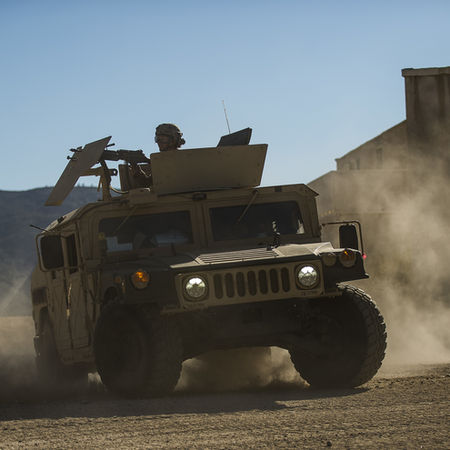
Journalists Under Fire
How should journalists balance their duty to report the truth with contractual obligations to protect sensitive information?
Does the close relationship between embedded journalists and military units inherently compromise journalistic objectivity?
When the United States invaded Iraq in 2003, the term “embedded journalism” entered the public lexicon. Journalists embedded with military units were granted unprecedented access to military operations, living and working alongside soldiers in the field, in the heart of the action, granting them a rare and intimate view of war. For many viewers and readers, this provided vivid, real-time accounts of military operations, bringing the realities of war into living rooms worldwide. However, embedding journalists in close proximity to military operations came with restrictions. Contracts between media outlets and the military require journalists to adhere to strict rules, including refraining from publishing information that could compromise operational security. Some view this as necessary for protecting soldiers and missions, while other critics see it as censorship. Militaries are also aware unfiltered journalism has the potential to undermine public support for wars and may police journalists from that standpoint. While the arrangement allowed journalists to report from the frontlines, critics argued that embedding raised serious conflicts of interest. When journalists depend on soldiers for food, transportation, sources, and survival, their reporting may lose impartiality. Embedded reporters may feel pressure, both explicit and implicit, to portray the side granting them access in a positive light, effectively turning them into unofficial extensions of the military’s public relations efforts. They may present an overly sanitized view of war that omits critical perspectives such as civilians in conflict zones or deal with ambiguous responses from civilians. This concern is heightened by the fact that journalists cannot roam freely to gather alternative perspectives, as their movement is controlled by the military. Major developments can go unreported if the military was not present at the site and consequently no embedded journalists were either. Even when journalists believe 1they are presenting an objective reality, the filtered lens through which the military allows them to observe the world limits the information they can gather and share. Supporters counter that embedded journalism provides a rare and unique window into the dimensions of war. They argue that embedded journalists provide crucial insights into the experiences of soldiers and the realities of war that might otherwise remain hidden, even with traditional independent news reporting. Embedded journalism enables reporters to bring to light the human side of war – capturing the bravery, fear, and camaraderie of soldiers, and interacting with isolated civilian populations. Restricting certain information may be a small price to pay to gain a deeper understanding of wartime experiences and updates. Furthermore, supporters note that restrictions on certain operational information were a necessary compromise to ensure safety and national security. These arrangements are often the only way to obtain stories from restricted and dangerous areas, ensuring that the public has some understanding of war beyond official press releases. Additionally, since many terrorist groups and non-state actors target journalists as potential hostages, it would seem embedding with a military unity is the safest way to gather information.
DISCUSSION QUESTIONS
1.How should journalists balance their duty to report the truth with contractual obligations to protect sensitive information?
2.Does the close relationship between embedded journalists and military units inherently compromise journalistic objectivity?
3.To what extent is it realistic to expect true objectivity from journalists?
Cockburn, P. (2010, November 23). Embedded journalism: A distorted view of war. The Independent. https://www.independent.co.uk/news/media/opinion/embedded-journalism-a-distorted-view-of-1war-2141072.html Ghosh, S. G. (2021, September 27). A contemporary deep-dive into embedded journalism. The Pangean. https://thepangean.com/A-Contemporary-Deep-Dive-Into-Embedded-Journalism203


